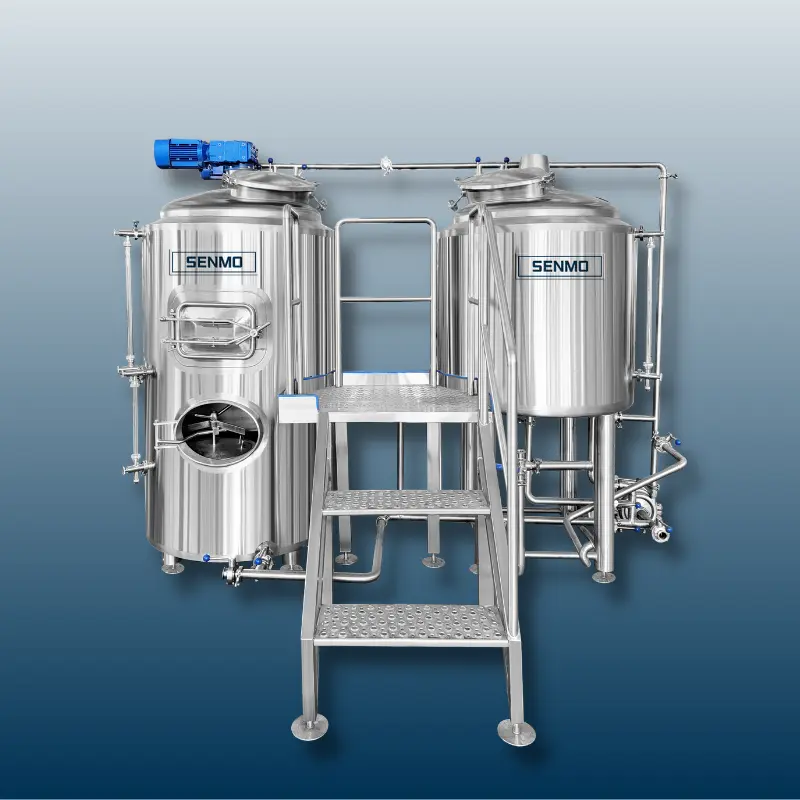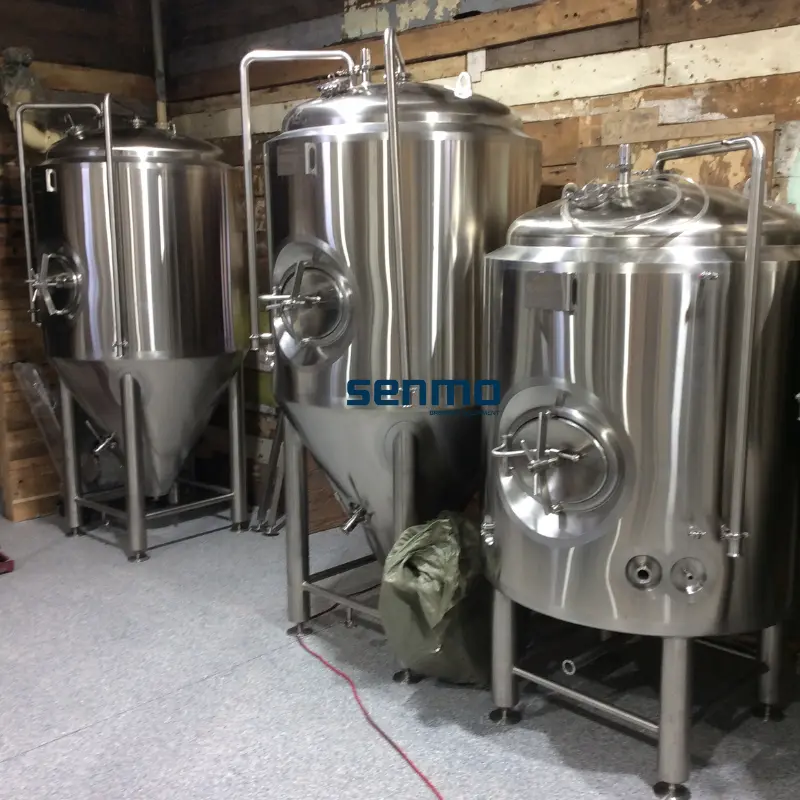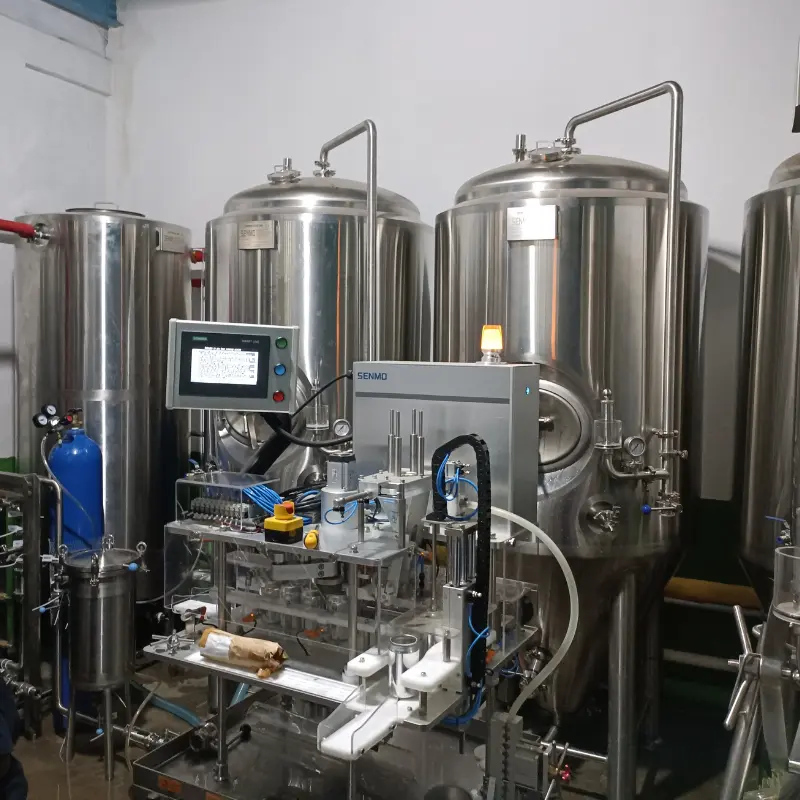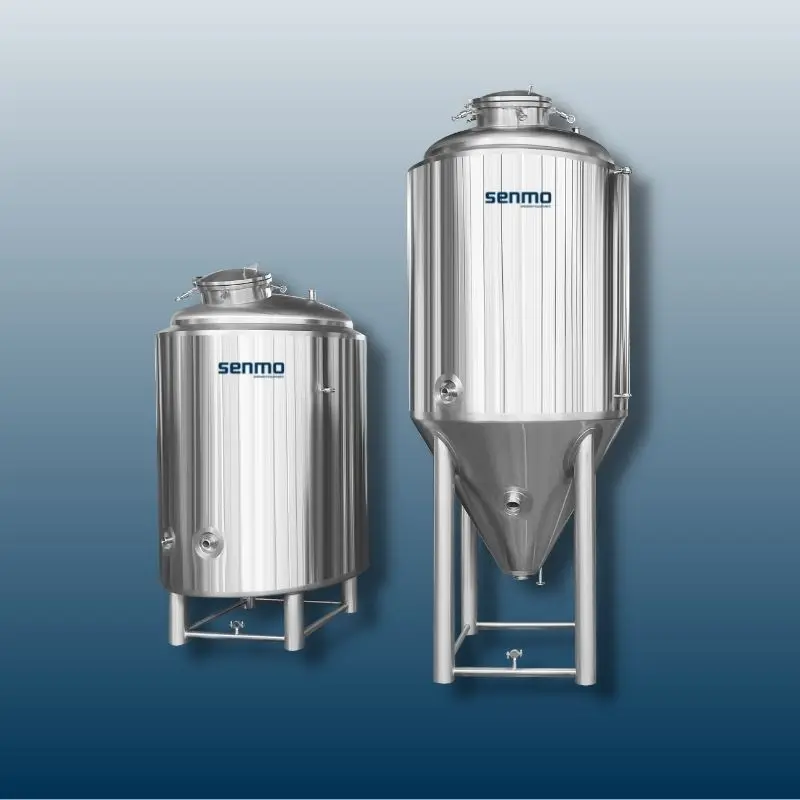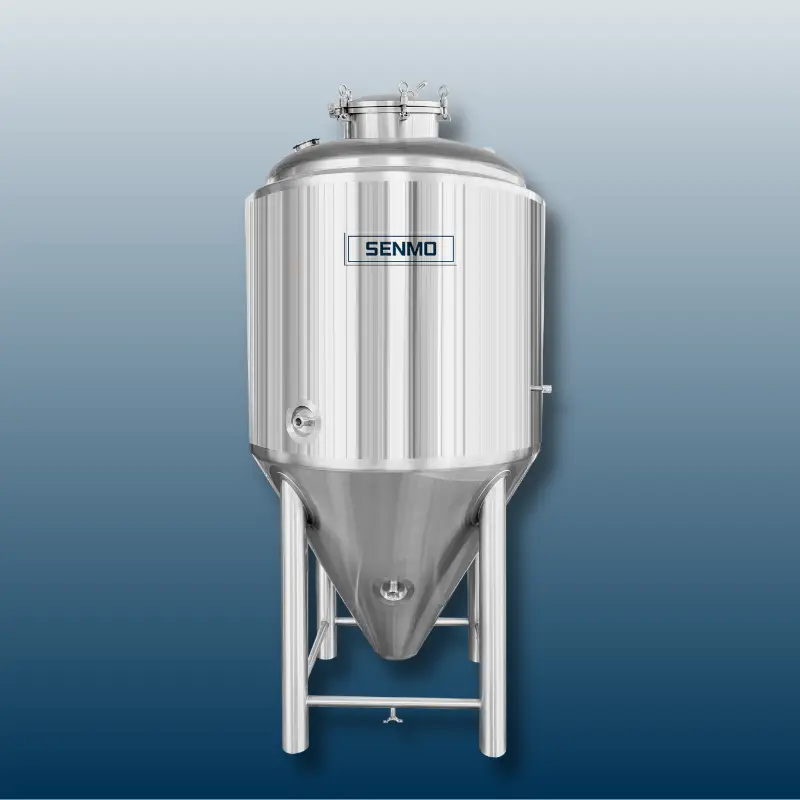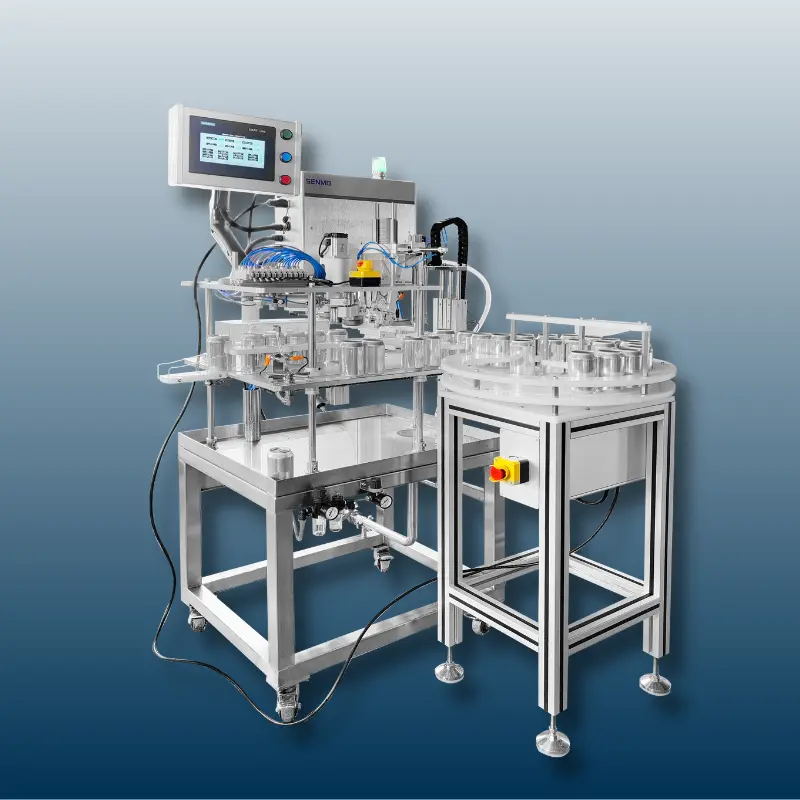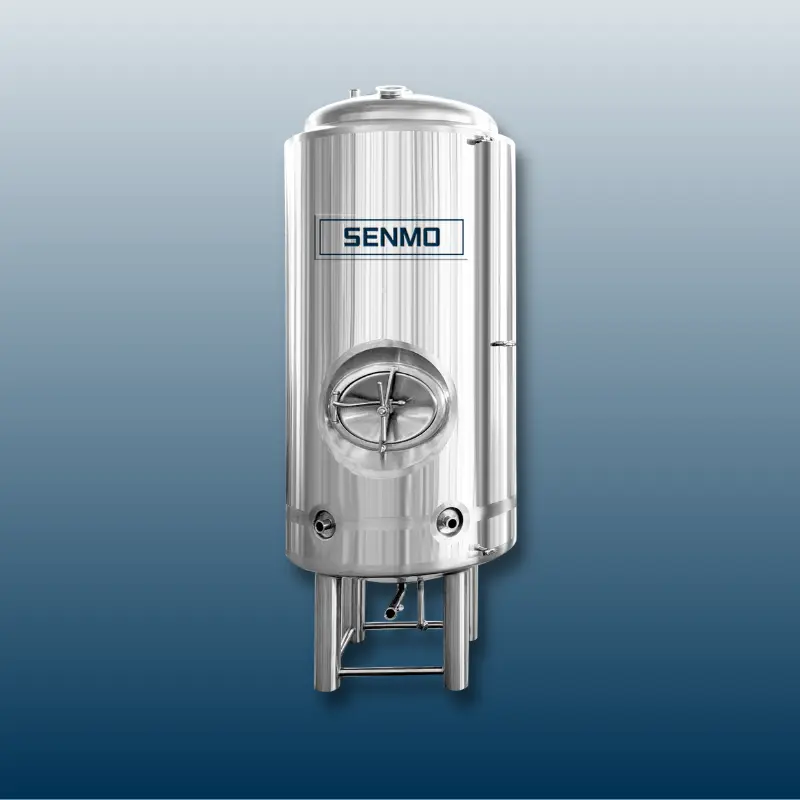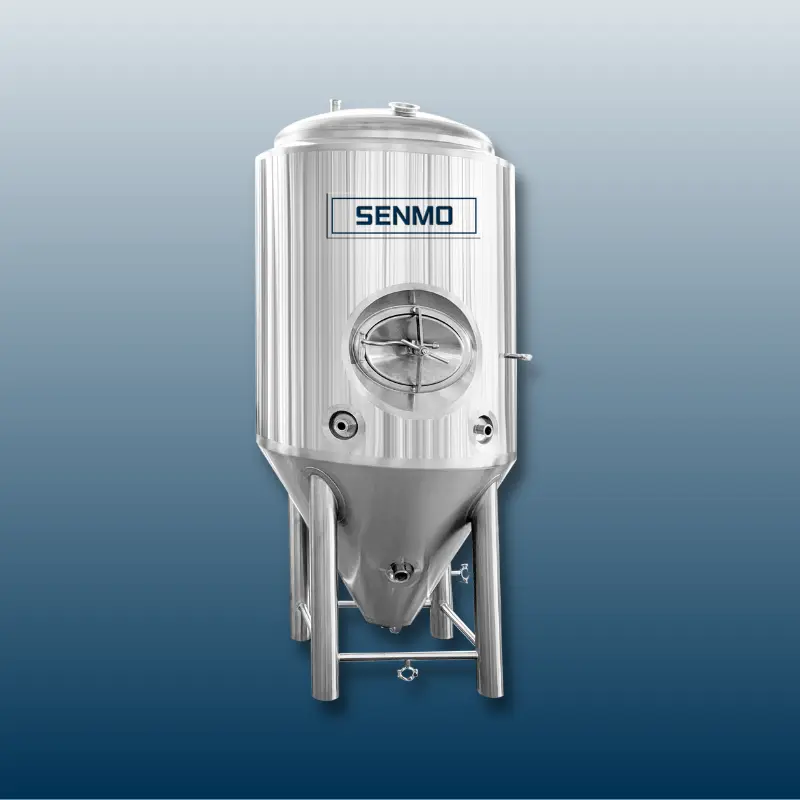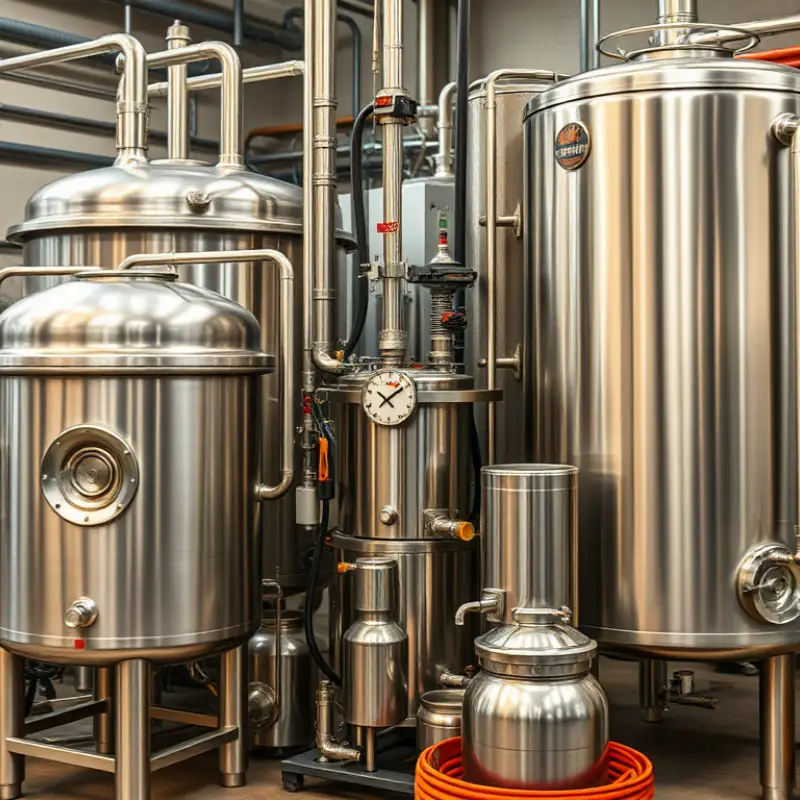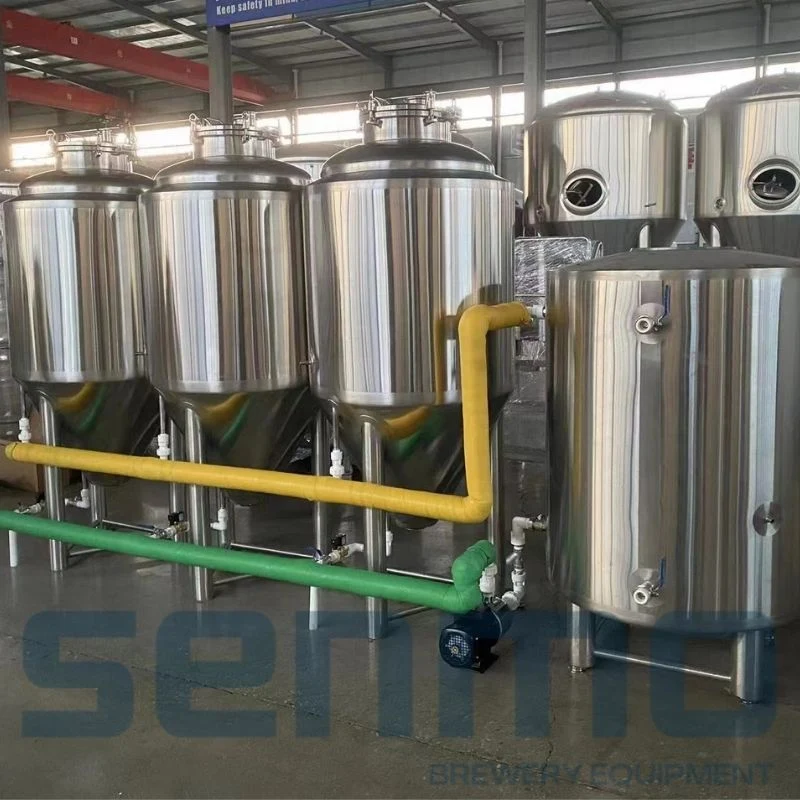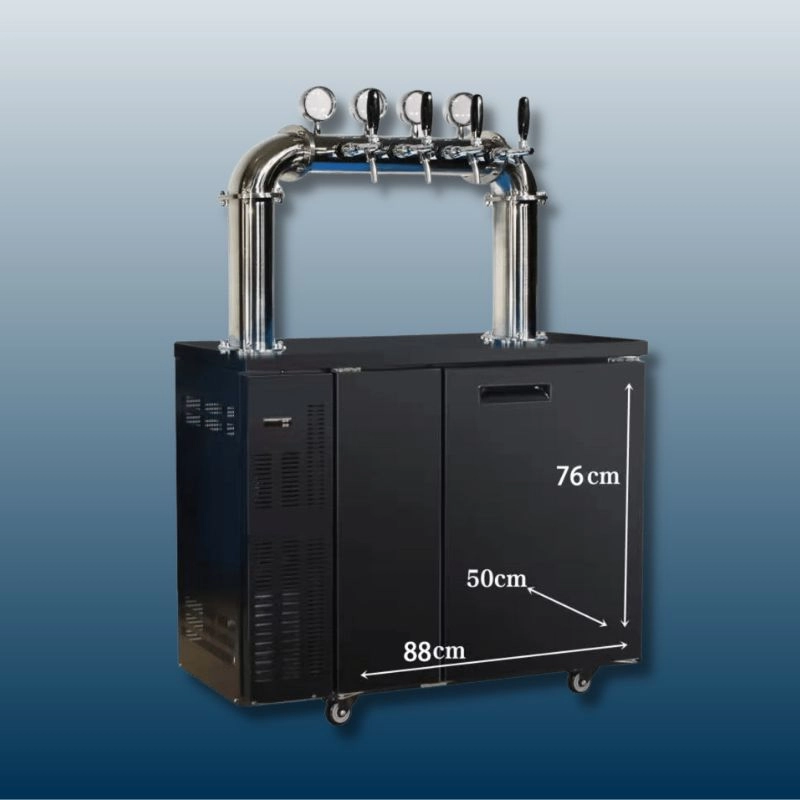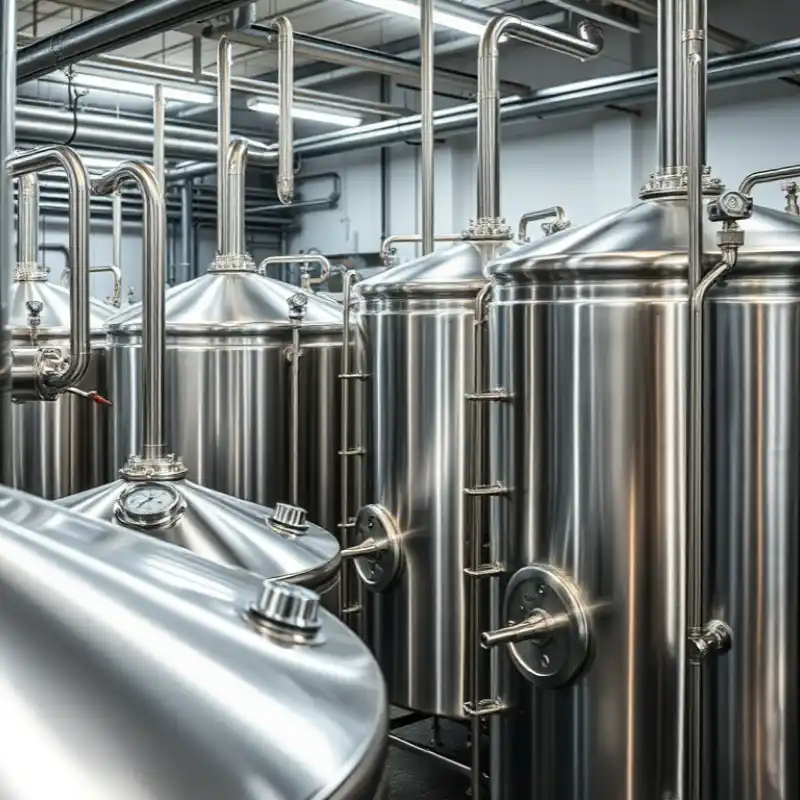Features and Benefits
Scalability: Our 200 litre brewing system is ideal for small to medium-scale production, allowing brewers to scale up production as demand grows.
Consistency: With precise temperature control, uniform heating, and efficient lautering, our system ensures consistent quality from batch to batch.
Customization: We offer customization options to tailor the system to your specific brewing preferences, whether you focus on traditional styles or experimental brews.
Ease of Use: Designed with user-friendly interfaces and intuitive controls, our system is easy to operate, even for novice brewers.
Durability: Constructed with high-quality materials and robust engineering, our brewing system is built to withstand the rigors of commercial brewing environments.
Support and Service: We provide comprehensive support and service to our customers, including installation assistance, training, and ongoing technical support.
200-liter brewing system components
A 200-liter brewing system usually contains the following main components:
Brewing barrel or wort boiler
Used to mix and boil malt, water and other raw materials to extract the sugar and flavor substances in the malt.
Typically equipped with heating elements, stirrers, thermometers and the necessary valves and pipes to control temperature, mix liquids and drain boiled wort.
Heat exchanger or cooler
Used to quickly lower the temperature of boiled wort in preparation for fermentation.
Rapid cooling can be achieved through water cooling or other cooling media.
Fermenter
Used to hold the wort and carry out the fermentation process, converting the sugar in the wort into alcohol and carbon dioxide.
Usually equipped with temperature control equipment, pressure relief valves and sampling ports to monitor and control fermentation conditions.
Transfer pump and piping
Used to transfer liquid from one container to another, such as from a brewing barrel to a fermenter.
Need to be made of food grade materials to ensure hygiene and safety.
Control System
Including temperature controllers, timers, sensors, etc., used to monitor and control key parameters in the brewing and fermentation process.
Adjustments can be made manually or automatically to ensure process stability and repeatability.
Cleaning and disinfection equipment:
Used to regularly clean and disinfect various parts of the system to ensure the hygiene of the brewing process and the quality of the beer.
This may include cleaning agents, disinfectants, brushes, spray guns, and other tools.
Storage and dosing systems:
It is used to store the raw materials required for brewing, such as malt, yeast, water, etc., and provides a precise batching mechanism.
May include raw material drums, meters and conveying equipment.
safety equipment:
Such as pressure relief valve, overheating protection switch, etc., are used to ensure the safety of system operation and prevent accidents.
These components can be adjusted and configured based on specific brewing system and process needs. At the same time, for the 200-liter brewing system, its compactness and adaptability also need to be considered to ensure that it can operate efficiently within the limited space of the restaurant. Ease of operation, cleaning and maintenance also need to be considered when designing and selecting components to ensure long-term stable operation of the system.
Design brewing system for a beer experiment
Designing a 200-liter brewing system for new beer experiments requires special attention to the flexibility and adjustability of the experiment so that it can explore the impact of different brewing recipes, yeast types, fermentation conditions and other factors on beer quality. Here are some key design points:
Modular design:
The modular structure makes the various components of the brewing system easy to disassemble and reassemble. This allows the system configuration to be flexibly adjusted according to different experimental needs.
For example, design interchangeable brewing kegs and fermenters so that containers of different capacities or materials can be easily replaced.
Precise control:
Integrated advanced control system can accurately control key parameters such as temperature, time, pH value during brewing and fermentation.
Consider using a touch screen interface or computer software to achieve remote monitoring and parameter adjustment to improve the convenience and accuracy of experiments.
Experimental recording and data analysis:
Design a data acquisition system that can record changes in various parameters during the brewing and fermentation process in real time.
Provides data export and analysis functions to facilitate researchers to conduct statistics and analysis of experimental results to optimize brewing formulas and processes.
Safety and Hygiene:
Ensure the system meets food safety and hygiene standards, using food-grade materials and easy-to-clean components.
Design safety protection measures, such as temperature overheating protection, pressure safety valve, etc., to ensure the safety of the experimental process.
Flexibility and scalability:
Consider system scalability so that new functional modules can be added or existing components can be upgraded in the future.
Design open interfaces and protocols to facilitate connection and integration with other experimental equipment or instruments.
Experimental material management:
Design a special storage and management system to store and manage malt, yeast, water and other raw materials required for experiments.
Consider using automated or mechanized raw material dosing systems to reduce human errors and improve experimental efficiency.
User friendliness:
An intuitive and easy-to-use operation interface is designed to enable researchers to easily master the operation and maintenance of the system.
Detailed operation manuals and technical support are provided to help users get started quickly and solve potential problems.
During the design process, close collaboration with brewing experts, laboratory technicians, and potential end users is recommended. They can provide valuable advice and feedback to ensure the system is designed to meet the specific needs of new beer experiments. In addition, it is also very important to conduct preliminary experimental verification and testing to ensure the stability and reliability of the system.
Design brewing system for a restaurant
When designing a 200-liter brewing system for a restaurant, you need to consider the system's practicality, convenience, and compatibility with the restaurant's daily operations. Here are the key points to focus on when designing this system:
Compactness and space optimization:
Given the limited restaurant space, the system design needed to be compact and efficient to maximize space utilization.
Reasonably plan the layout of each component to ensure easy operation and maintenance without affecting other functional areas of the restaurant.
Automation and convenience:
Integrated automatic control functions, such as preset brewing programs, one-button start, etc., reduce manual operations and improve work efficiency.
Design an intuitive and easy-to-use operation interface to enable restaurant employees to quickly master how to use the system.
Cleanliness and Hygiene:
Ensure the hygiene of your brewing system meets food safety standards by using materials that are easy to clean and disinfect.
Designed with parts that are easy to disassemble and assemble, allowing for regular deep cleaning and maintenance.
Flexibility and Diversity:
Consider designing a system with multiple brewing capabilities to accommodate different beer varieties or specialty drinks your restaurant may offer.
Allows brewing parameters, such as temperature, time, etc., to be adjusted according to needs to produce beer that matches the characteristics of the restaurant.
Yield and efficiency:
Ensure the system can complete the brewing process in a reasonable amount of time to meet the restaurant's demand for beer.
Optimize the brewing process, reduce waste and loss, and improve brewing efficiency.
Security and stability:
Consider electrical safety, fire protection and explosion-proof measures when designing the system to ensure safe and reliable operation.
Use high-quality components and materials to ensure system stability and durability.
Training and support:
Provide systematic operational training to ensure restaurant staff are proficient in using the system and handling common problems.
Provide technical support and after-sales service so that you can get timely help and solutions when needed.
During the design process, it is recommended to communicate with restaurant management, chefs, and potential consumers to understand their needs and expectations. This will help ensure that the system is designed to meet the actual operational needs of the restaurant and provide customers with a quality beer experience. At the same time, local regulations and health standards also need to be considered to ensure system compliance.
Information required to customize a 200L brewing system
If you are customizing a 200 liter brewing system, you will need to provide the supplier with the following key information to ensure the customized system meets your specific needs and expectations:
Brewing requirements and techniques:
Describe the type of beer you plan to brew, the style, and expected annual or monthly production.
Provides detailed information on the brewing process, including malt preparation, boiling times, temperature control, fermentation conditions, etc.
Space and layout:
Provide detailed dimensions and layout drawings of the premises where the brewing system will be installed, including height, width and length restrictions.
Describe other equipment and space requirements around the system so the supplier can design the system to fit your site.
Materials and hygiene standards:
Specify the type of materials and hygiene standards used in the brewing system, such as grade of stainless steel, corrosion resistance, etc.
Indicate whether specific surface treatments or coatings are required to meet food safety and cleaning requirements.
Automation and control:
Describe the degree of automation you desire, including whether preset programs, remote monitoring, data logging, etc. are required.
Provide preferences and requirements for control system interfaces to ensure ease of operation and monitoring.
Productivity and efficiency:
Identify the production capacity requirements of the brewing system, such as brew volume per hour or batch number per day.
Describe the level of focus on energy efficiency and resource utilization so that suppliers can consider these factors in their designs.
Safety standards and certifications:
Provide relevant safety standards and certification requirements, such as CE marking, food safety certification, etc.
Describes special requirements for electrical safety, fire and explosion protection measures.
Budget and Timeline:
Provide your budget range so that vendors can design and quote within your budget constraints.
Indicate your expected delivery time and installation schedule so the supplier can schedule production and distribution.
Other special requirements:
Provide any other specific requirements or preferences, such as specific valve types, piping connections, exterior designs, etc.
When providing this information, full communication and discussion with suppliers is recommended to ensure that both parties have a clear understanding of needs and expectations. In addition, you can also ask the supplier to provide past project cases or references to evaluate whether its technical strength and experience meet your customized needs. Finally, negotiate with the supplier and sign a detailed contract or agreement to clarify the rights and responsibilities of both parties to ensure the smooth progress of the customization process.
If you really need a custom beer brewing system, please talk to our professionals on this information sheet. After filling it out we will customize it according to your needs.
Our 200 litre brewing system and fermentation system offer a complete solution for brewers seeking to produce high-quality beer with precision, consistency, and efficiency. Whether you're starting a new brewery or upgrading your existing setup, our system provides the tools you need to unleash your creativity and craft exceptional beers that delight drinkers around the world. Elevate your brewing game with our innovative brewing system today!
